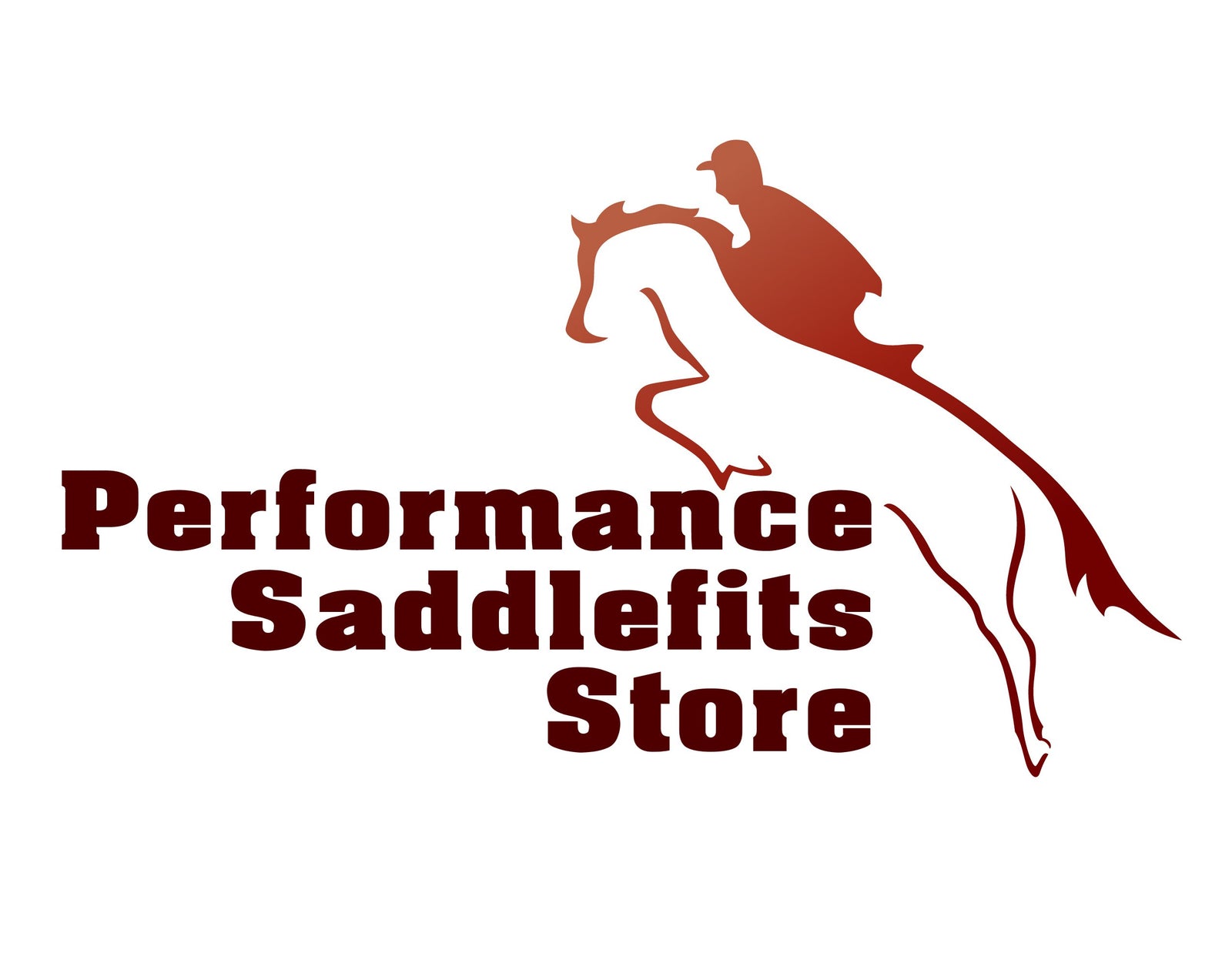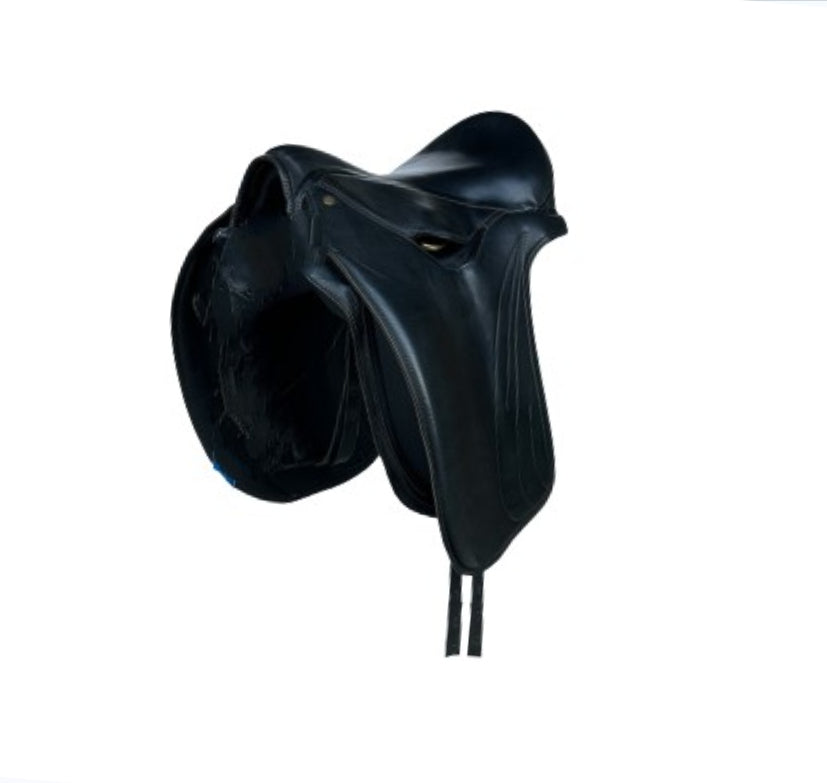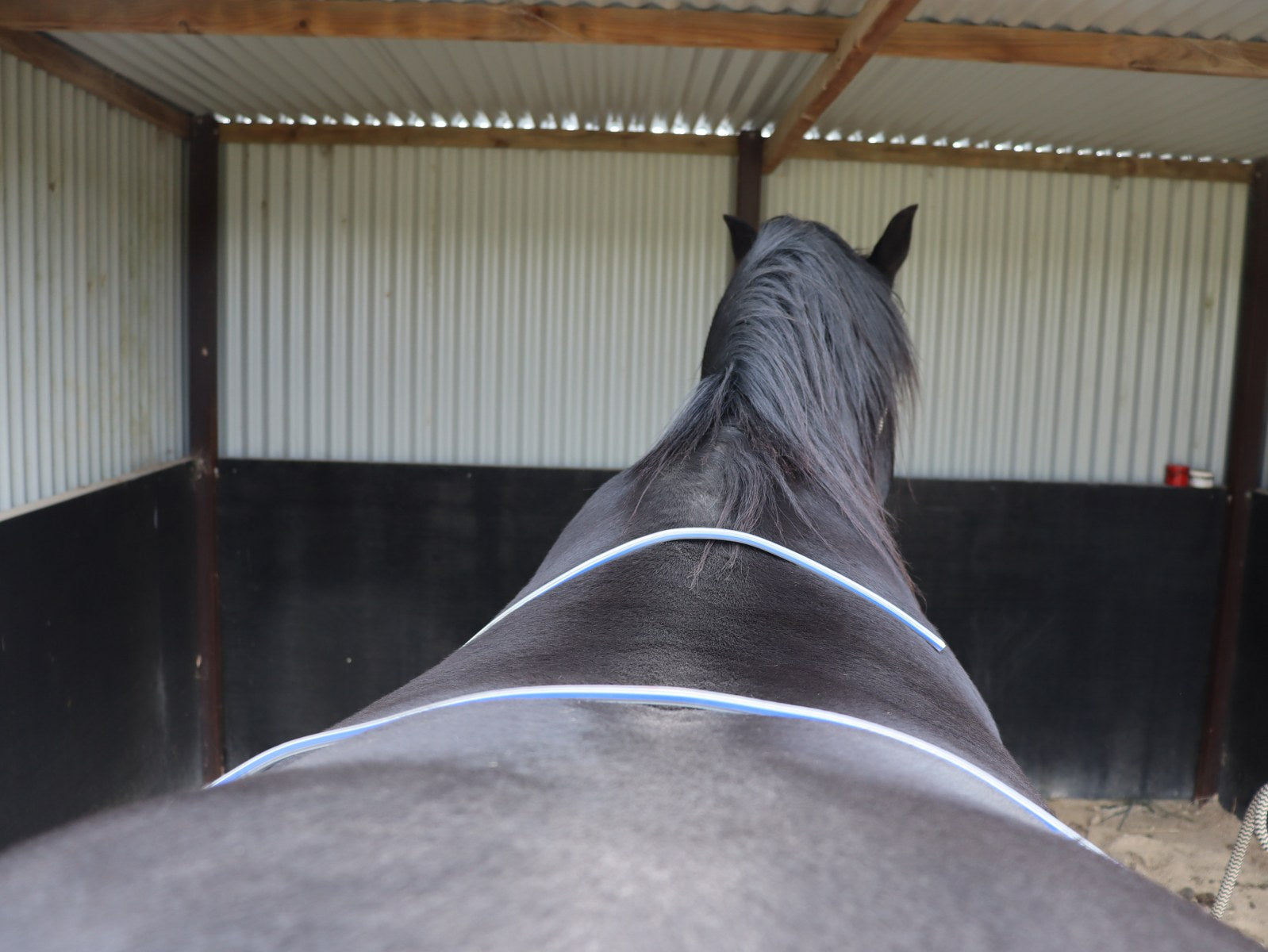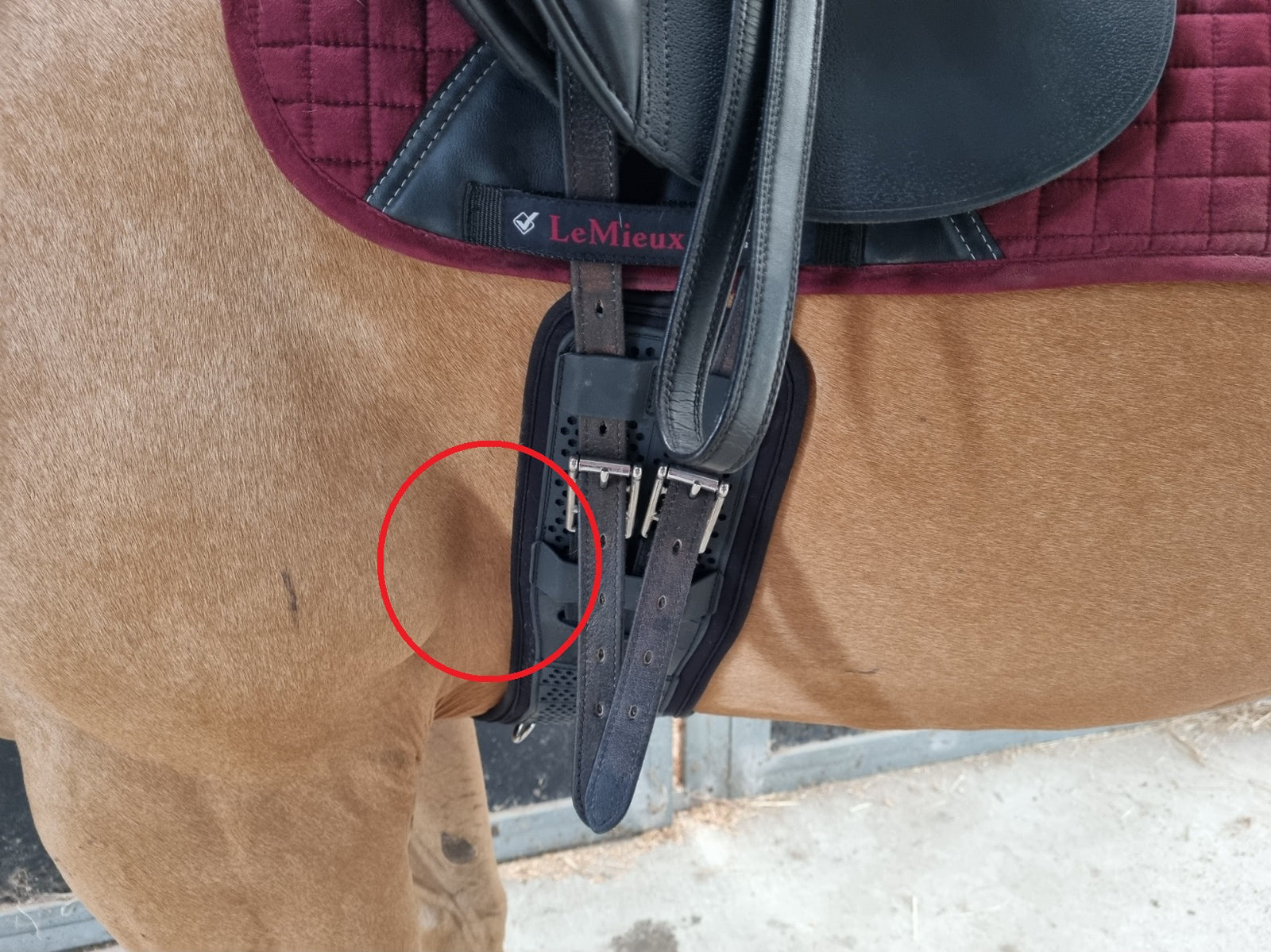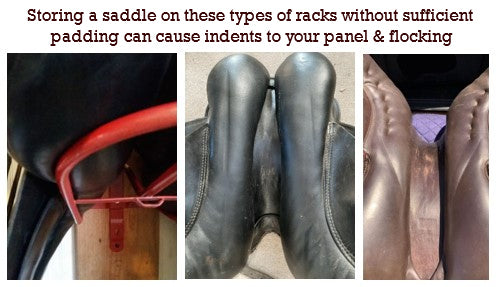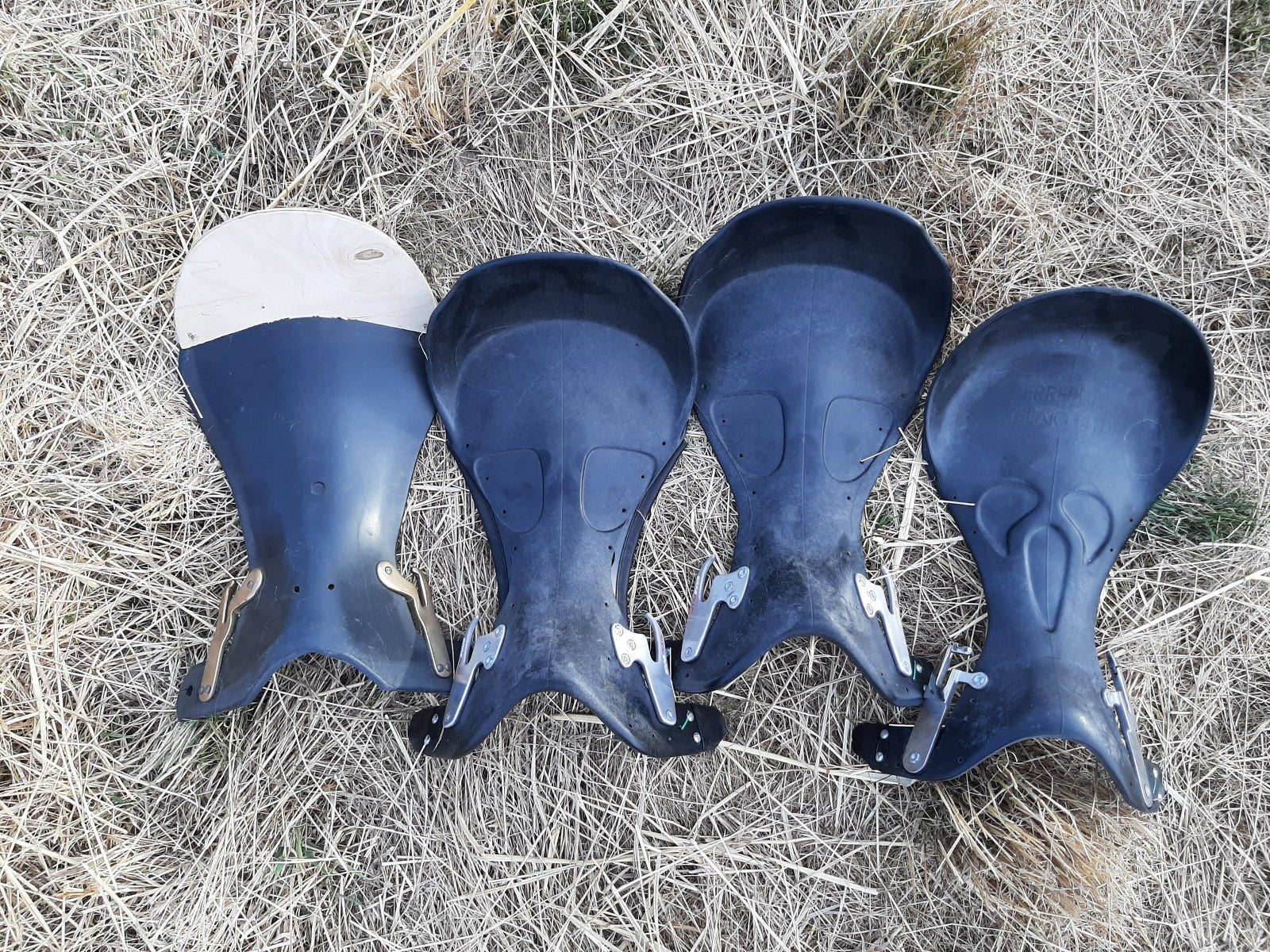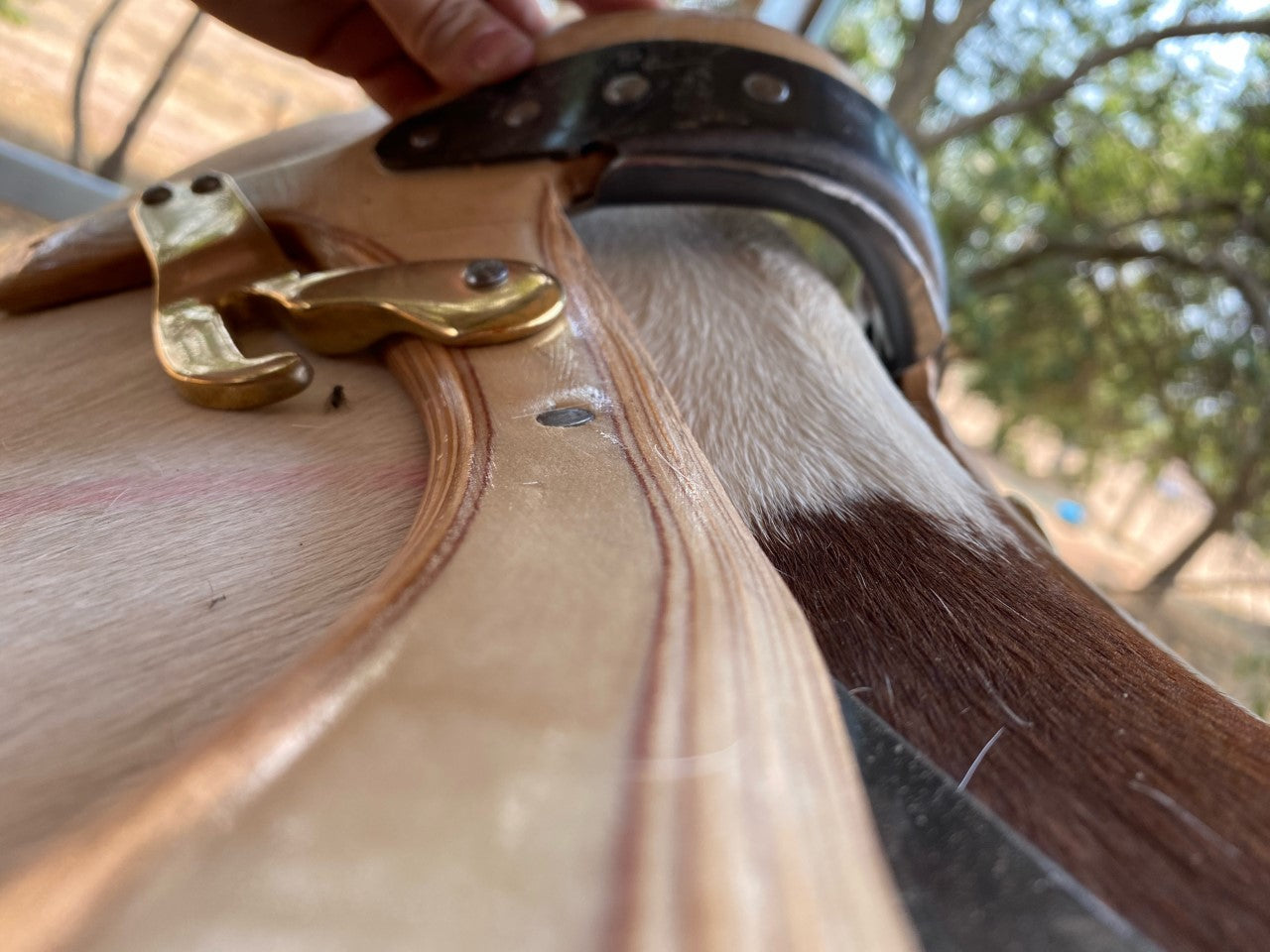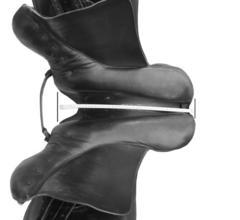Does your horse have a straight back or a curvy back or something in between?? 🤔🤔
Horses have different shapes through the length of their backs and it's very important to know if your saddle tree matches this shape. You also need to consider the horse's static shape vs dynamic shape as horse's can lift their backs when being ridden, changing their profile shape! 🐎
And did you know that most of the cheaper saddles you buy off the shelf are based on a standard shape horse? So if you have a horse who doesn't fit this mold you could be causing the horse all sorts of problems! 😬
There are 2 main problems caused with an incorrect profile shape: bridging and rocking. Both are a big problem for your horse because they not only make your horse uncomfortable they can also decrease your horse's performance, cause muscle damage, compensatory posture, behavioural issues, and make your horse very sore. 😥
Can you see in these photos that the same tree profile will not fit all 4 horses?




So what does rocking and bridging mean and what does it look like?
Rocking is where the tree is too curvy for the horses back (think of a banana sitting on a flat surface🍌 ) So when you push down alternately on the pommel and cantle the saddle will rock back and forth creating a pivot point in the middle causing pressure in this area and usually making a horse very sore. It's even worse in the rise trot.
Bridging is where there is no contact with the tree through the centre as the tree is too straight for the horse (just like a bridge over a river🌁) causing pressure at the front and back of the panels. This can create extreme soreness in the horse. You can often see daylight between the saddle and horse's back if you look underneath or you can run your hand underneath and feel for it.
Rocking:


Bridging:


Please be mindful though that there are other things that can cause a saddle to 'rock' or 'bridge' so you need to have this assessed to find the true cause. For example, a saddle that has a gullet that is too wide or the flocking is too soft in the front or back or too full in the middle can also make the saddle rock or appear to rock. Equally so a gullet that is too narrow, a saddle sitting up on the shoulders or flocking that is too soft or empty through the middle can make a saddle bridge.
- So what profile is your horse?
- What profile is your saddle?
- How stable is your saddle?
- Do you have any bridging?
If you're not sure please get some professional help as any saddle that has the wrong tree is the wrong saddle for that horse no matter what else may or may not fit!
